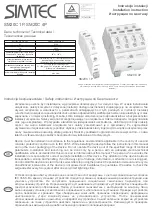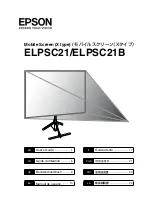
BASIC OPERATION
CP2000-X User Manual
3-43
020-100031-01 Rev . 1 (03-2009)
Encountering the following conditions will always trigger a flashing red alarm
window at the TPC:
ACTIVATED SAFETY INTERLOCK
—caused by an open lamp door, a failed
extractor or lamp fan, or an open fire alarm switch. For any safety interlock
breach, the lamp ballast will immediately stop powering the lamp.
TAMPER DETECTION
– caused by unlocking the projector lid. Failure is also
logged and prevents display of incoming CineLink
- encrypted cinema source
material.
FAILED LAMP IGNITION
—Failure to successfully strike the lamp.
COMMUNICATION ERRORS
—SSM and/or I
2
C links may be malfunctioning.
It is also recommended that the following additional conditions always be set to
trigger an alarm window (default). Select these triggers in the
Advanced Preferences
TPC menu:
OVER TEMPERATURE
—caused when the temperature in the card cage, red/blue
DMDs, integrator, prism or SSM has exceeded the operating specification
FAN SPEEDS
—caused when a main intake fan, card cage fan, or the laminar air
flow device fan fails or is too slow.
LAMP EXPIRY
—appears when lamp has reached the end of its life (as defined in
the Lamp Limit setting).
IMPORTANT:
For normal operation, do not disable alarm triggers.
Most TPC projector functions can be controlled remotely, typically at a controller,
via simple bi-directional ASCII messaging on an Ethernet communication link.
WHAT SETUP IS NEEDED?
To control these TPC functions remotely via your own
controller, you must open an Ethernet socket between your controller and the valid
TPC address. See complete instructions in
Setup and Shutdown
later in this section.
Note that only one “physical” connection is permitted at any given time, and access
to remote functions may be limited by the installer. Do not use an RS-232 (serial)
link.
All “remote control” information passes in and out of the TPC as simple messages
consisting of command code and any data related to it. Such messages can be a
command to
set
a projector parameter at a specific level, such as changing to a certain
channel. Or the controller can
request
information, such as what channel is currently
in use—the projector then returns the data in a
reply
message. Regardless of message
type or origin, all messages use the same basic format and code as shown in Figure
3.28. Where applicable, a message can expand to include additional parameters of
related data.
Figure 3.28. The 3 Message Formats
(SHADED MESSAGE IS FROM PROJ.)
Errors and Alarms
3.6 Remote
Control
of the
Touch Panel
Controller
Understanding
ASCII
Message Formats
Содержание CP2000-X
Страница 1: ...CP2000 X U S E R M A N U A L 020 100031 01...
Страница 2: ......
Страница 42: ......
Страница 102: ......
Страница 112: ......
Страница 130: ......
Страница 135: ...SPECIFICATIONS CP2000 X User Manual 8 5 020 100031 01 Rev 1 03 2009...
Страница 160: ......
















































